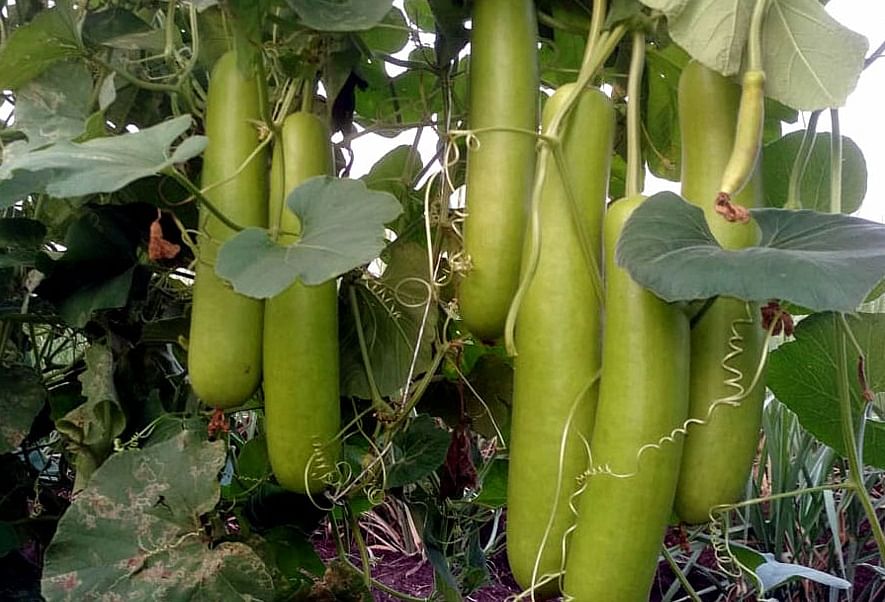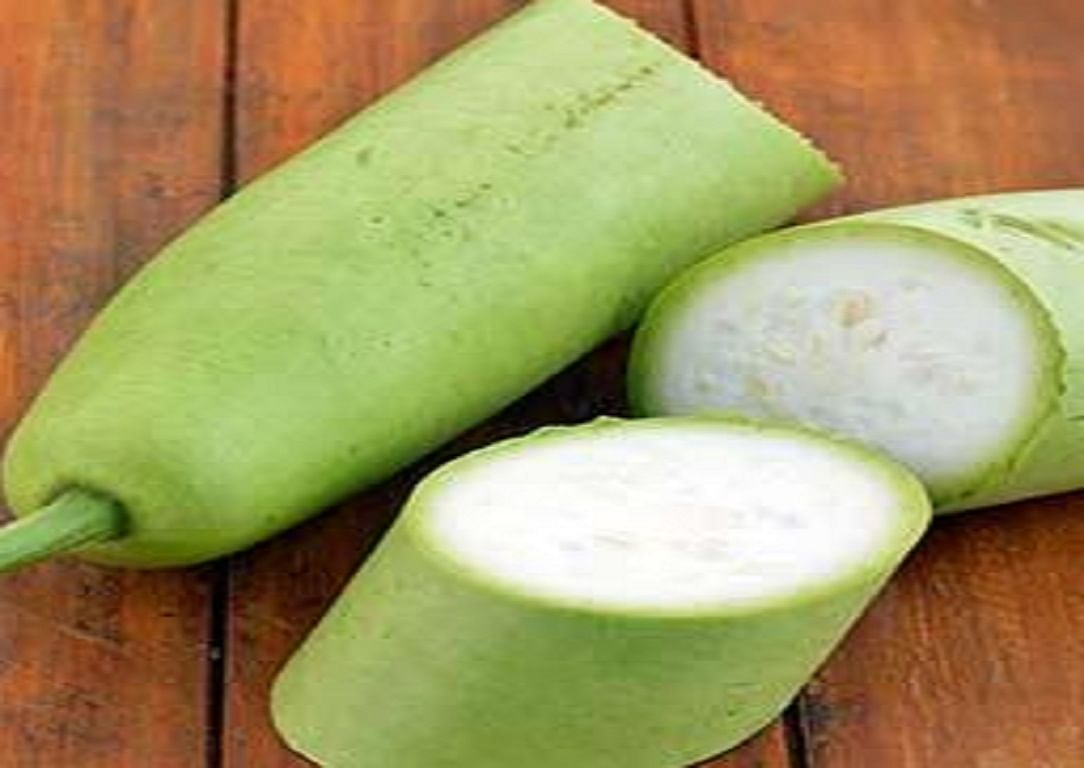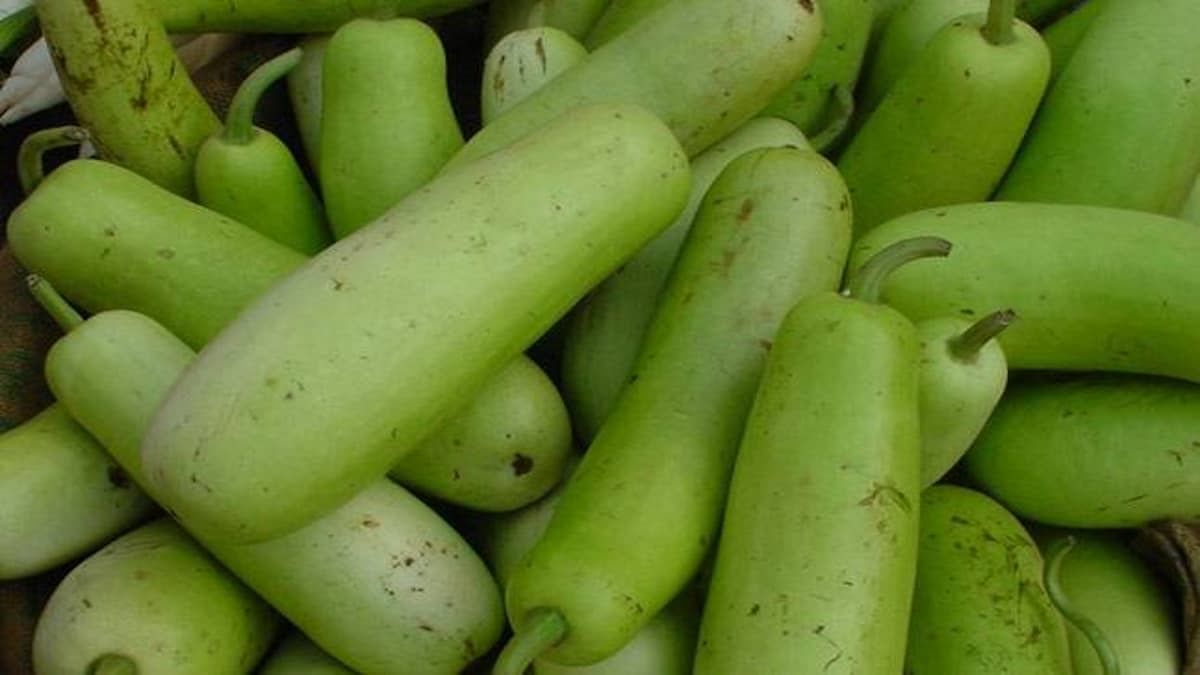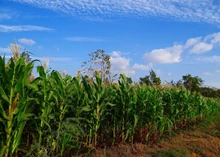
Scientific Name- Lagenaria siceraria
Family-Cucurbitaceae
Introduction:
-
In India, it is an important vegetable crop.
-
In green stage, the vegetables and leaves with stem are used as a vegetable.
-
Hard shell of the Bottle Gourd is used for different purposes.
-
It is one of the world’s first cultivated plants and it is not grown mainly for food but it is also used as containers.
Local Names:
Bottle gourd has different names in different languages like Sorakya/Anapakaya(Telugu), Soreikai/Chorakkai(Tamil), Chorakaa(Malayalam), Sorekai(Kannada), Ghia/Lauki(Hindi) and Zeeth (Kashmiri).
Location:
-
In India, it grows in almost all the states like Bihar, Uttar Pradesh, Haryana, Madhya Pradesh, Chattisgarh, Orissa, Punjab, Assam, Andhra Pradesh etc.
-
Bihar has the largest production of Bottle Gourd.
Season:
The best time to plant seeds are Summer and Monsoon.
Climate:
-
It requires moist and hot climatic conditions for its cultivation.
-
The Vegetables cannot withstand frost.
-
For 4 months there should be no frost for its better growth.
-
The suitable temperature for its cultivation is 20-32°c.

Soil Requirement:
-
It can be grown in a wide range of soils.
-
But it grows best in Sandy loamy soils with a good drainage system.
Land Preparation:
-
6-7 plowings followed by harrowing should be done to bring the soil to fine tilth.
-
In soil, pH range should be from 6.5-7.5 for its cultivation.
-
For better yield and good quality of vegetable, organic matter or FYM should be added for making the soil rich.
Sowing Time:
-
In the plains for monsoon or rainy crops it is sown from June-July and in the hills in April.
-
For summer crops, it is sown from January to end of February.
Seed Rate:
Generally for bottle gourd farming the seed rate should be between 3.5 kg- 6kg/ha.
Seed Treatment:
Before sowing, seeds should be treated with 10gms of Pseudomonas fluorescens or 4gms of Trichoderma Viridae or 2gms/kg of Carbendazim seeds.
Spacing:
-
Dibbling method is used for sowing vegetable seed at a spacing of 2m to 3 x 1.0m – 1.5m.
-
In a pit, generally 2-3 seeds are sown at 2.5cm – 3.0cm depth.

Varieties:
|
DEVELOPING INSTITUTION |
VARIETY |
SPECIAL FEATURES |
|
IIHR, Bangalore |
Arka Bahar |
Fruits straight without crook neck medium sized each weighing 1.0 kg at marketable stage, light green and shining fruit, yield of 40-50t/ha |
|
IARI, New Delhi |
Pusa Naveen |
Fruits are cylindrical, straight and free from crooked neck with average weight of 550g. |
|
NDAU&T, Faizabad, UP. |
Narendra Rashmi |
Moderately tolerant to pumpkin beetle. Fruits are bottle shaped having shallow neck and average weight 1.0 kg and Yield 30 t/ha. |
|
Punjab Agricultural University, Ludhiana |
Pusa Komal |
Fruits are medium sized with oblong shape and light green skin. They are Tolerant to CMV, early harvest (70 DAS), with a potential yield of 40 t/ha. |
Fertilizer Requirement:
-
10 kg of FYM (20ton/ha), mixture of 100gms of NPK 6:2:12 as basal and 10gms of N/pit for 30 days should be applied after sowing.
-
Before the last plowing, application of Azospirillum, Phosphobacteria( 2kg/ha) and Pseudomonas ( 3kg/h) along with 50 kg of Farmyard manure and 100 kg of neem cake is needed.
Irrigation:
-
This crop requires immediate irrigation and is very beneficial in this cultivation.
-
Summer crop requires irrigation at an interval of 3-4 days.
-
Winter crops are irrigated when it is required.
-
Rainy season crops do not require irrigation.
-
Drip irrigation method can also be used as it has many advantages.
Harvesting:
-
The crop is ready to harvest in 60-70 days depending upon the variety and season.
-
Medium and tender fruits are harvested depending upon the market requirement.
-
Fruits should be cut from a sharp knife
-
Vegetables should be harvested when they are still green.
-
Harvesting should not be delayed as it causes the bottle gourd to become rotten or dry.
Yield
The expected average yield can be 100-120 quintal/hectare.










